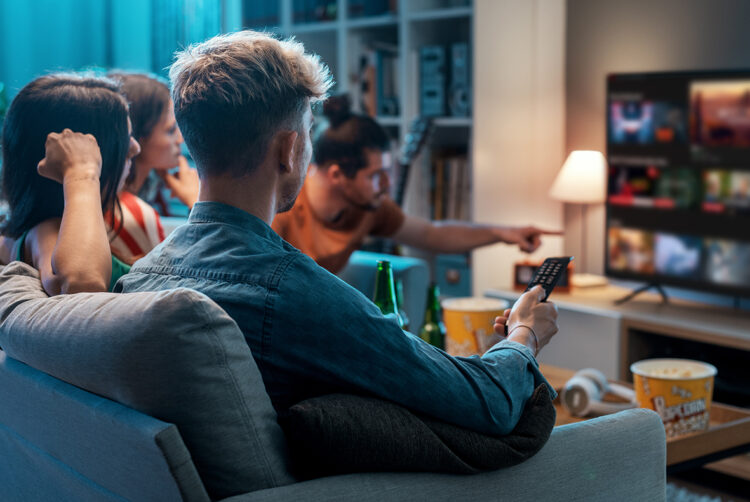Here are 4 factors that boost advertising recall at home

Advertising in the living room drives “significantly higher ad recall” than other rooms in the house, a new study has found.
New research commissioned by Thinkbox found the living room drove 176% better ad recall than the kitchen, 10% higher than the bedroom and 22% more than all other rooms in the home.
The Context Effects study was jointly conducted by Map the Territory and Tapestry Research.
It isolated the main contextual factors that drive ad recall at home as: professional video content, a big screen, company and mood — with the living room bringing together all four factors in “the most powerful combination” for better ad recall.
When examining this “best combination” of in-home contextual factors, average ad recall was 32.5%. This was more than six times the average ad recall recorded from the “weakest combination” of factors, namely watching non-professional content alone in the kitchen, at -5.1%.
Matt Hill, research and planning director at Thinkbox, said the research showed TV was “uniquely placed to deliver the context that delivers memorability”.
He added: “TV is the social medium. It brings people together and gets ads talked about. Every night, there are nearly 5m conversations about the ads on commercial TV. Great planners have long argued the case for the power of context and this study provides the proof that it really does make a huge difference — even room to room.”
Professional content boosts ad trust
Within each of these contextual factors, there were additional findings relating to ad recall, trust and feelings of entertainment and enjoyment.
Ad recall was 60% higher for professionally produced video content compared with non-professional content such as user-generated videos.
In addition, respondents were 44% more likely to trust an ad seen within professional content and 39% were more likely to find it “entertaining”.
The study observed that advertising around non-professional content was “better suited” to personal and more targeted tastes, but these ads risked being skipped.
According to Barb, 80.2% of living room video viewing is of professionally produced content on a TV set, while 5.1% is of non-professional video content, with the remainder coming from activities such as gaming.
TV screens drove 60% higher ad recall than tablets or smartphones and 34% higher than computers.
This was down to the size of the screen as well as the quality of audio, with sound bars increasing ad recall by 20%.
Better together
Advertising in the study was also found to work better when seen with other people, with a 23% uplift in ad recall when ads were seen in a shared environment.
In addition, most shared viewing occasions happened in the living room (89%), followed by bedroom (7%), kitchen (2%) and other rooms (3%), according to Barb data, which also found that TV was overwhelmingly “a shared medium” — 42% of live TV, 50% of playback, 4% of broadcaster VOD and 43% of subscription VOD was watched jointly.
Meanwhile, just 10% of YouTube was watched with other people.
Andy Davidson, co-founder of Map the Territory, said: “To understand why advertising is so effective in the living room, you need to understand why people are there. We learned that people don’t only gather to watch TV, they also watch TV to gather.
“In this context, all shared content, from the hot new drama to a regular video ad, is working in the higher service of bringing that household a little closer together. It’s all useful, so ads are more accepted, relevant, enjoyed and ultimately more memorable.
“In contrast, social media is, ironically, much more personal and this anti-social content — and advertising around it — is less suited to the shared living room environment.”
The study was based on Map the Territory’s qualitative and videographic methodology to observe viewing habits, combined with Tapestry Research’s quantitative research and statistic analysis.
The qualitative element involved 20 UK households representative of household type, class, age, race and sexuality, while the quantitative phase included a nationally representative survey of 2,000 UK consumers aged 18-75 who had watched video content the day before. This involved a detailed viewing diary that asked respondents to fill in up to three viewing occasions from the previous day.
Amazon, Disney+, Netflix, Vevo and Warner Bros Discovery join Thinkbox




